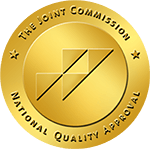Colorado, like most states, has not been immune to the impact of the opioid epidemic. The stress of the COVID-19 pandemic has only added to this deadly problem. Addiction treatment centers throughout the state have been instrumental in combatting the Colorado opioid epidemic and other addictions.
How Many People Are Overdosing From Opioids in Colorado?
According to the Colorado Department of Human Services (CDHS), “Colorado recorded 543 opioid overdose deaths in 2018 from both prescription opioids and illegal opioids such as heroin.”
Heroin belongs to a class of drugs called “opioids.” Other opioids include:
- Morphine
- Fentanyl
- Oxycodone
- Codeine
The CDHS further explains that “[a]mong heroin users in Colorado, 70 percent say they started their drug use with prescription medications.” Doctors prescribe opioids primarily to treat pain. Opioids include naturally occurring substances (also called “opiates”) and synthetic drugs. Prescription opioids can be misused or abused due to their euphoric effects and the “high” that these substances produce.
These addiction statistics are expected to rise as overdose deaths increase nationwide amid the pandemic. The Centers for Disease Control and Prevention (CDC) states that “[o]ver 81,000 drug overdose deaths occurred in the United States in the 12 months ending in May 2020, the highest number of overdose deaths ever recorded in a 12-month period.”
Addiction Statistics in Colorado
While opioids are among the most deadly substances due to their potential for overdose and respiratory failure, Colorado also faces other addictions. Many people might use multiple substances, contributing to an increased likelihood of overdose and death. According to the National Institute of Drug Abuse (NIDA), “In 2019, 16 percent of overdose deaths involving opioids also involved benzodiazepines.”
The State of Colorado Substance Abuse and Response Task Force report from January 2019 shares some of the following addiction statistics:
- “41,268 treatment admissions for substance use were initiated in 2017, representing 3,130 more admissions than in 2016.
- While alcohol has the highest number of treatment admissions, over 40% of the treatment admissions in 2017 were for heroin and methamphetamine.
- Prescription opioid treatment rates have remained stable, but heroin treatment admissions have increased by 132% since 2013.
- Methamphetamine treatment admissions have increased by 63% since 2013.
- Marijuana treatment admissions decreased by 7%.
- Twenty-five through 34-year olds accounts for the highest number of individuals admitted into treatment.”
In addition to opioids, methamphetamine and alcohol use continue to increase in Colorado. While marijuana treatment admissions have decreased, this drop is most likely due to the legalization of cannabis throughout the state. As fewer employers are testing for marijuana use, fewer people will be referred to treatment centers for a marijuana use disorder.
Responding to the Colorado Opioid Epidemic and Other Rising Addictions
The state of Colorado is responding to the opioid epidemic and treating other addictions in many ways. These include expanding access to treatment services, especially among those with low incomes who might not seek treatment due to financial difficulties. Other interventions include emergency responses to prevent death from opioid and other drug overdoses.
The CDHS has created some of the following programs to help residents of Colorado with mental health and substance use disorders:
- Colorado Crisis Services: Offers residents information and referrals for mental health, substance use, and emotional crisis help. These services are accessible 24/7 for all residents.
- The Circle Program: State-funded and “offers comprehensive community-based residential treatment to individuals with co-occurring substance use and mental health disorders.”
- Opioid Use Disorder Programs: Due to the severity and prevalence of opioid use disorder in Colorado, the Office of Behavioral Health funds and provides oversight for various programs to treat opioid addiction.
- Recovery Support Services: These services help those with substance use and mental health disorders “improve their health and wellness, live self-directed lives, and strive to reach their full potential” by focusing on four dimensions: health, home, purpose, and community.
- Individual Placement and Support (IPS): People in recovery from mental health and substance use disorders might have difficulty finding or maintaining employment. This program helps people in recovery find meaningful and satisfying careers.
- Community Substance Use Prevention and Early Intervention: By working with young people to “[reduce] risk factors and [increase] protective factors associated with substance misuse and general wellness,” Colorado is taking a proactive approach to stop addiction before it begins.
The state of Colorado is responding to the opioid crisis in many other ways that can be found on the CDHS website. In addition, many treatment facilities across the state have been adapting to COVID protocols to continue safely providing services to those in need. Some programs and peer support groups offer telehealth and online alternatives accessible to everyone from their own homes.
Opioid and Other Addiction Treatment in Denver
Due to the stress of the recent pandemic, many people find themselves self-medicating by misusing prescription opioids or abusing other substances. Self-medicating can lead to addiction and substance use disorders. Continuum Recovery Center of Colorado is here to help those struggling with addiction and co-occurring mental health disorders. Call us today or visit our admissions page to get started.



